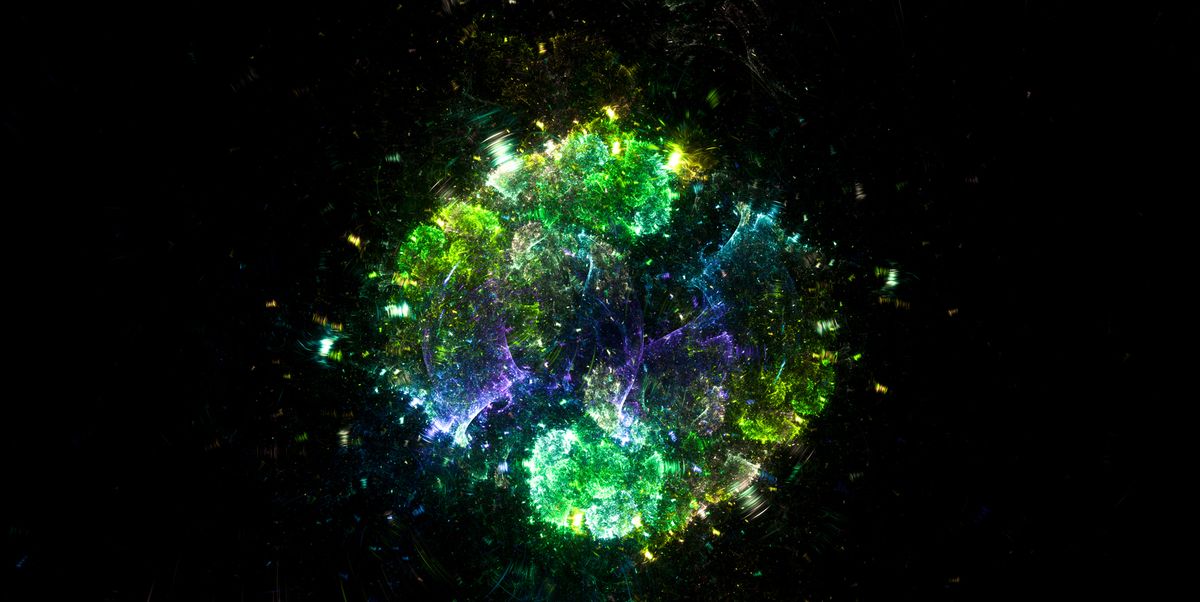
A phenomenon once confined to equations breaks into the observable world.
- Scientists put carbon in a deep frozen magnetic field to create Wigner crystals.
- This elusive state results from electrons trying to escape each other in a small space.
- To capture the crystals, researchers employed a microscope that uses current instead of light.
In new peer-reviewed research, physicists from Princeton University have confirmed that electrons don’t even need atoms in order to party together. By using magnetic fields, they were able to induce and detect Wigner crystals, which are orderly assemblies of electrons on their own. And while it may look like a party, the adhesion is created by interlocking and mutual revulsion—more like electron Thanksgiving.
To create and examine a Wigner crystal structure, the scientists used a powerful magnetic field around a readied sample of graphene. Graphene is a preparation of carbon atoms in a regular lattice that’s one atom thick, which gives it properties that make it a highly prized tool in the study of microscopic and quantum phenomena like this. It can be flat, rolled into tubes, wrapped around things, and in this case, arranged in a double layer. When the magnetic field was applied, each carbon atom’s four electrons were in put in play, and formed triangular Wigner crystals.
Why does this happen? Well, according to the researchers, “Wigner predicted that when the Coulomb interactions between electrons become much stronger than their kinetic energy, electrons crystallize into a closely packed lattice.” Coulomb interactions are a cornerstone of all electromagnetic study, and are also called electrostatic force. They’re why the same side of magnets repel each other, and in this case, same-charged electrons repel each other.
When electrons are trapped very tightly within a magnetic field that they can’t escape, it’s like the car crusher at your local junkyard. The electrons desperately want to escape each other, but they’re packed inside, densely, with nowhere to go. So, the best they can do is to space out as far as they can, which results in a uniform arrangement. Much like many chain retailers, each electron wants to seek out the closest location with the least competition (from magnetic forces).
By turning the magnetic field all the way up and turning the temperature all the way down to the cryo zone, researchers were able to observe how this lattice formed—and even photograph it the triangular crystals that contain only the electrons from these carbon atoms. With more density or higher temperatures, the electrons instead became a liquid. Indeed, tuning these variables led to changes and surprises that can be studied further.
The real star of the study may be the scanning tunneling microscope (STM) used to observe this behavior, which allows researchers to “photograph” phenomena on this level without using light. Light is a particle that acts like a wave, and it’s disruptive in many nanoscopic contexts where individual particles are at play. The STM instead works almost like quantum-level radar or sonar—a very precise point made from a conducting material is brought very close to the surface it’s measuring, and the way in which the current travels back to the tip is what is used to generate imagery.
These images are the first to ever capture this elusive Wigner crystal state. “There are literally hundreds of scientific papers that study these effects and claim that the results must be due to the Wigner crystal, but one can’t be sure, because none of these experiments actually see the crystal,” senior author Ali Yazdani explained in a statement. These crystals were first theorized nearly 90 years ago, and while it’s valuable to use a term and idea to describe other research, that “negative space” can’t replace firsthand observation of the phenomenon.
Observing using this quantum microscope requires a very clean sample and practically perfect conditions, so highly studied and well understood graphene (as a major darling of quantum research) is a great place to lay that groundwork. From there, the scientists can explore and try to photograph the phase changes and other differences within their dual-layer graphene setup. After that, other researchers may be able to branch into different materials and contexts, with an example in hand of what the isolated Wigner crystal may look like.
The 2023 Popular Mechanics Automotive Excellence Awards: EVs
News Related-
Russian court extends detention of Wall Street Journal reporter Gershkovich until end of January
-
Russian court extends detention of Wall Street Journal reporter Evan Gershkovich, arrested on espionage charges
-
Israel's economy recovered from previous wars with Hamas, but this one might go longer, hit harder
-
Stock market today: Asian shares mixed ahead of US consumer confidence and price data
-
EXCLUSIVE: ‘Sister Wives' star Christine Brown says her kids' happy marriages inspired her leave Kody Brown
-
NBA fans roast Clippers for losing to Nuggets without Jokic, Murray, Gordon
-
Panthers-Senators brawl ends in 10-minute penalty for all players on ice
-
CNBC Daily Open: Is record Black Friday sales spike a false dawn?
-
Freed Israeli hostage describes deteriorating conditions while being held by Hamas
-
High stakes and glitz mark the vote in Paris for the 2030 World Expo host
-
Biden’s unworkable nursing rule will harm seniors
-
Jalen Hurts: We did what we needed to do when it mattered the most
-
LeBron James takes NBA all-time minutes lead in career-worst loss
-
Vikings' Kevin O'Connell to evaluate Josh Dobbs, path forward at QB
